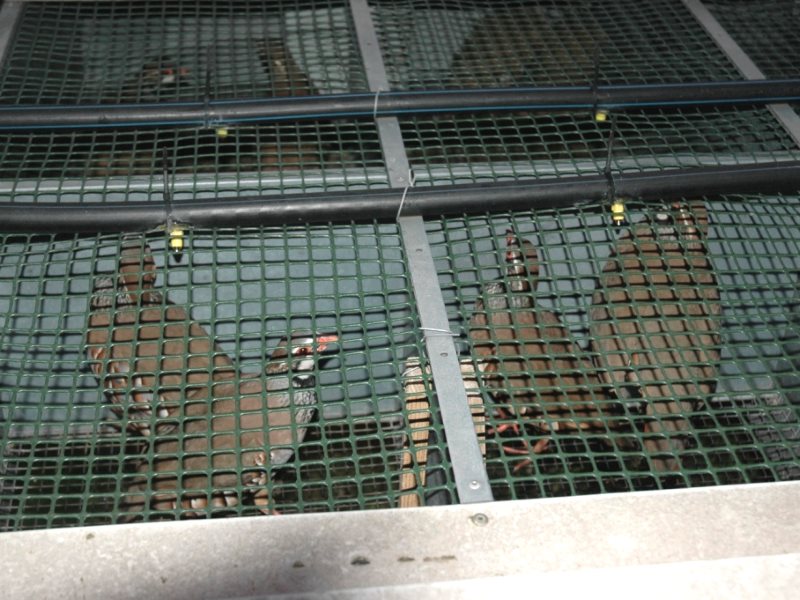Don't leave your egg production to chance !

Product Description
Partridge breeding cages rootstock are designed to easily feed and supply water to partridges and also obtain high quality fertilised egg. Partridges are placed to have 1 male and 2/3 females in each section separated from the other Partridges. Thanks to the slope of the cage floor the Partridge eggs are rolled forward and the eggs are collected at the front of the cage teeth.
Professional game bird breeders, according to Gamebirds Codes of Practice Chapter 6 in the draft Code, on the housing of breeding pheasants and partridges, for those farmers and breeders who do not want to risk their bussiness we just the perfect cages for partridges.
- Partridge breeding cage capacity to hold 36-48 Partridge,
- Partitions between male Partridges are closed to prevent them fighting.
- Each tier has 3 divisions, each division is ideally designed for 1 male 2/3 females.
- Highly partridge droppings resistant, bacteria repellent, long life expansion frame / cage,
- Base prevents eggs from cracking and partridge feet from being injured,
- High capacity plastic manger,
- Plastic droppings tray,
- Water tank,
- Automatic nipple with watering dropper,
- Suitable for use to pass onto a multi - storey design,
- Contact with the ability to layer on top of the chassis without the need for additional new facilities.
- Locked wheel system
- A 4 storey 1m2 cage / frame can hold 36 - 48 partridge,
- L(96,8 cm) x W(62,5 cm) x H(189 cm)
-internal measurements per section per level;
Front height 37cm ,
Back height 30 cm,
Width 30cm,




Product Description
Partridge breeding cages rootstock are designed to easily feed and supply water to partridges and also obtain high quality fertilised egg. Partridges are placed to have 1 male and 2/3 females in each section separated from the other Partridges. Thanks to the slope of the cage floor the Partridge eggs are rolled forward and the eggs are collected at the front of the cage teeth.
Professional game bird breeders, according to Gamebirds Codes of Practice Chapter 6 in the draft Code, on the housing of breeding pheasants and partridges, for those farmers and breeders who do not want to risk their bussiness we just the perfect cages for partridges.
- Partridge breeding cage capacity to hold 36-48 Partridge,
- Partitions between male Partridges are closed to prevent them fighting.
- Each tier has 3 divisions, each division is ideally designed for 1 male 2/3 females.
- Highly partridge droppings resistant, bacteria repellent, long life expansion frame / cage,
- Base prevents eggs from cracking and partridge feet from being injured,
- High capacity plastic manger,
- Plastic droppings tray,
- Water tank,
- Automatic nipple with watering dropper,
- Suitable for use to pass onto a multi - storey design,
- Contact with the ability to layer on top of the chassis without the need for additional new facilities.
- Locked wheel system
- A 4 storey 1m2 cage / frame can hold 36 - 48 partridge,
- L(96,8 cm) x W(62,5 cm) x H(189 cm)
-internal measurements per section per level;
Front height 37cm ,
Back height 30 cm,
Width 30cm,





















